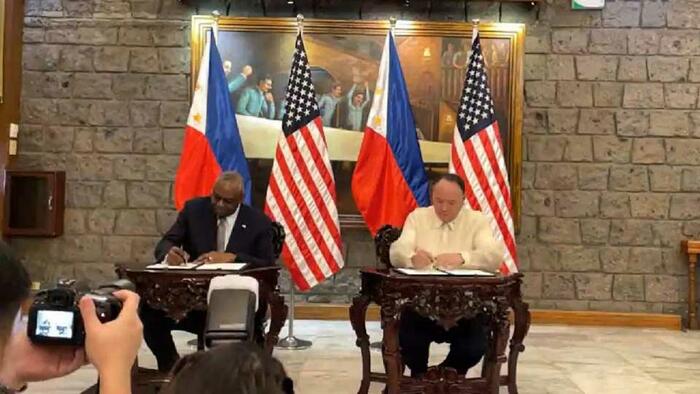The Pentagon has solidified its military footprint in Southeast Asia with the recent signing of a transformative defense deal between the United States and the Philippines. US Defense Secretary Lloyd Austin and Philippine Defense Secretary Gilberto Teodoro formalized this new collaboration through the General Security of Military Information Agreement, which allows for the sharing of classified military information and technology. This agreement, announced during Austin’s visit to Manila, marks a significant step in enhancing the Philippines’ military capabilities with access to more sophisticated US equipment. The deal has the potential to foster similar agreements with other allied nations, signaling a broader strategic shift in the region.
As part of the developments, Austin and Teodoro inaugurated a new combined command and coordination center within the Philippine military’s headquarters in Manila. This facility is designed for real-time information sharing, enabling a unified operational picture for both US and Philippine forces. Austin emphasized the long-term benefits of this center, stating it will enhance interoperability and coordination between the two military forces to address regional challenges effectively. Philippine military chief General Romeo Brawner expressed optimism about the joint command center, indicating it would bolster crisis collaboration and overall regional security.
China’s response to these military advancements has been predictably critical, with foreign ministry spokesman Lin Jian cautioning that any military arrangements should not target or harm external parties, nor should they escalate regional tensions. This reflects Beijing’s ongoing concerns regarding American influence in the Asia-Pacific, particularly given the historically fraught U.S.-Philippine defense relationship, which has already heightened regional rivalries, especially in contested waters such as the South China Sea. China’s assertive actions, including military confrontations with Filipino vessels, have compounded tensions, raising fears that US commitments to the Philippines could anchor Washington in a potential conflict.
The escalating maritime disputes, characterized by instances of Chinese coast guard ships using aggressive tactics against Philippine vessels, have forced the Philippines to seek closer ties with the United States for security assurances. This situation has underscored the gravity of the US-Philippines mutual defense treaty amid frequent incursions by Chinese forces into waters claimed by Manila. As confrontations escalate, the establishment of a military intelligence-sharing framework and the integrated command center signify a robust American commitment to defend its ally’s interests in the region, amidst a backdrop of increasing Chinese militarization.
In a broader context, China’s military expansion is not limited to Southeast Asia but extends to places like Cuba, suggesting a strategic counter to US advances across the globe. Beijing’s outreach in Latin America is indicative of its aim to challenge US hegemony by enhancing military ties with nations closer to American shores. This geopolitical chess game reflects both nations’ efforts to secure strategic advantages, as the US attempts to reinforce its alliances in the Pacific and counter Chinese assertiveness, while China seeks to expand its influence globally, particularly in regions historically dominated by the US.
In conclusion, the recent military agreement between the US and Philippines marks a significant shift in the regional security architecture, potentially altering the dynamics of power in Southeast Asia. It not only facilitates enhanced military cooperation between the two nations but also signals a clear message to China regarding the US commitment to its allies in the face of rising territorial aggression. As both nations navigate these intricate challenges, the implications of their strengthened partnership will be closely monitored by global stakeholders, particularly as tensions continue to simmer in contested waters and geopolitical rivalries evolve on a larger scale.

